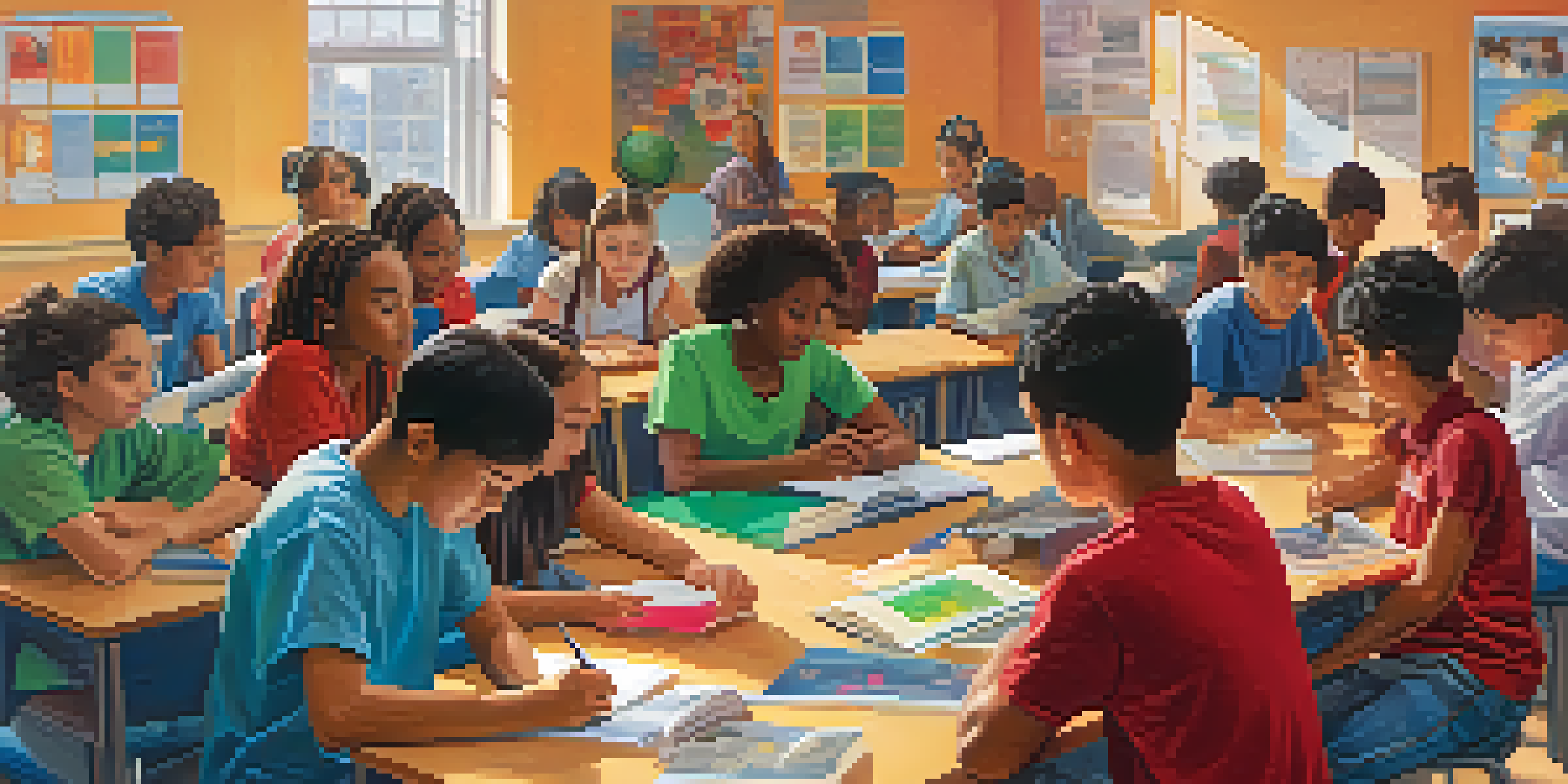Peer Learning and Its Relevance in Globalized Education

Understanding Peer Learning in Education
Peer learning is an educational approach where students learn from each other, engaging in collaborative activities that enhance their understanding. This method is rooted in the belief that knowledge can be constructed through social interactions and shared experiences. By working together, students can fill gaps in their understanding and gain new perspectives, making learning more dynamic and engaging.
The Role of Globalization in Education
Globalization has transformed education by fostering a more interconnected world, where ideas and cultures blend seamlessly. As students from diverse backgrounds come together, they bring unique experiences and viewpoints that enrich the learning environment. This cross-cultural exchange not only broadens students' horizons but also prepares them for the complexities of a globalized workforce.
Peer Learning Enhances Understanding
Students learn effectively by collaborating and sharing perspectives, filling gaps in knowledge through social interactions.
Benefits of Peer Learning in a Global Context
Peer learning encourages collaboration, critical thinking, and communication skills — essential traits in today's job market. When students work in diverse groups, they learn to appreciate different perspectives and develop empathy. This not only enhances their academic performance but also helps them build strong interpersonal relationships that can last a lifetime.
Fostering Inclusivity Through Peer Learning
In a globalized classroom, peer learning promotes inclusivity by allowing students to share their cultural backgrounds. This creates an environment where everyone feels valued and heard, which boosts confidence and motivation. For instance, a student from Brazil might share insights about their culture during a group project, enriching the experience for their peers and promoting understanding.
Globalization Enriches Education
The blend of diverse cultures in classrooms broadens horizons and prepares students for a globalized workforce.
Challenges of Implementing Peer Learning
Despite its benefits, implementing peer learning can come with challenges. Some students may struggle with the dynamics of group work, feeling overshadowed or hesitant to contribute. Additionally, teachers must find ways to facilitate these interactions effectively, ensuring that all voices are heard and that the learning objectives are met.
Strategies for Effective Peer Learning
To enhance peer learning, educators can incorporate structured group activities that promote collaboration. Using tools like collaborative online platforms can also help facilitate interactions among students, especially in remote learning environments. By providing clear guidelines and fostering a supportive atmosphere, teachers can ensure that peer learning is both effective and enjoyable.
Inclusivity Boosts Confidence
Peer learning fosters an inclusive environment where students feel valued, enhancing motivation and interpersonal relationships.
Future Trends in Peer Learning
As technology continues to evolve, peer learning is likely to become even more integrated into educational practices. Virtual reality and online collaboration tools are paving the way for global classrooms where students can interact with peers worldwide. This trend not only enhances learning opportunities but also prepares students for a future where remote work and digital collaboration are the norm.
Conclusion: Embracing Peer Learning for Global Education
Embracing peer learning in our educational systems is crucial in today’s globalized world. It not only enriches the learning experience but also equips students with the necessary skills to thrive in diverse environments. By fostering collaboration and inclusivity, we can create a more engaged and informed generation ready to tackle global challenges head-on.